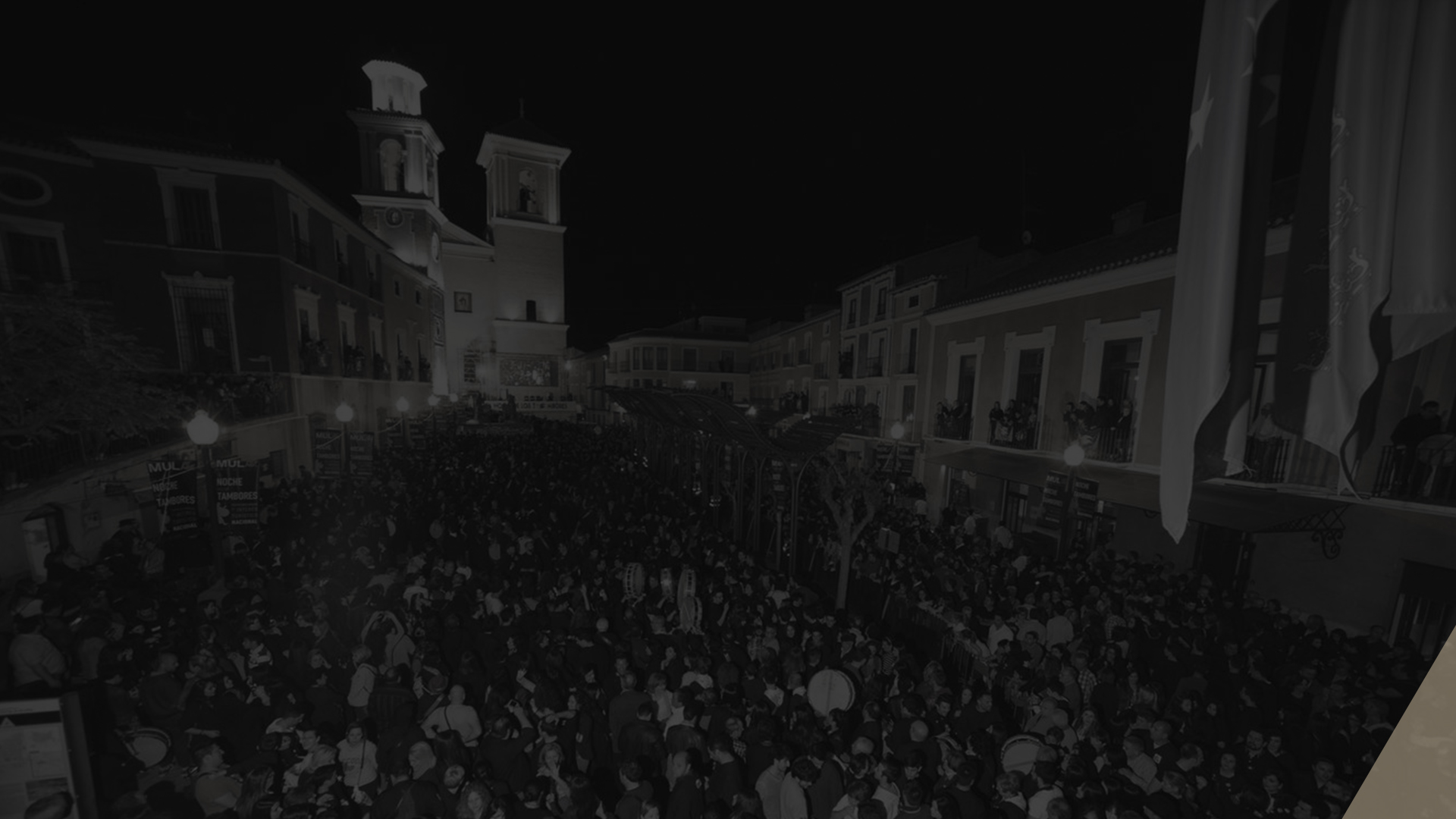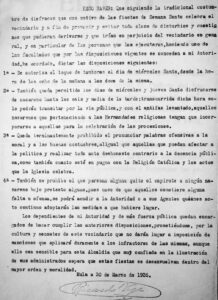Although it seems like already in the last quarter of the 19th century the Drums Night was on a Tuesday night, it was the Mula’s newspaper The Week where it was stated in 1919 that the “tamborada” (drum parade) would begin on Holly Tuesday at 12 at night:
“During the cogitation days of the Holly Week, our first administrative authority would like to make an announcement to authorise the drums procession from 12am on Holly Tuesday to 12pm on Holly Wednesday…”. The Week, 24th April 1919.
The designation as Drums Night came with the creation of the Mula’s Drummers Association in the 1980s and it was used as the official name for that night from 1995, as contained in the announcement poster.
DEVELOPMENT
THE ANNOUNCEMENT
THE CLOCK AND THE SQUARE
The Town Hall Square has been the hub of the town of Mula since it was built in the first quarter of the 16th century. It hosted the festivals, markets, announcements and any other events.
For that reason, the Town Hall Square has been and still is the meeting-place for the drummers, and the place where the “tamborada” commences every Holly Tuesday.
The Clock Tower in the Town Hall Square also plays a fundamental role, and it is closely related to the “tamborada’. Although in recent times the “Melody Call to the Tamborada” indicates the beginning of the festival, traditionally the public clock was starting it. In those days, the drummers waited for the clock to strike midnight inviting them to beat their drums.
THE PÁNGANA
One of the features of the “tamborada” in Mula are the “Pánganas”, which is a spontaneous show where the drummers compete to demonstrate who holds out for longer or who plays better.
The monument to the drummer: the sculpture of Rafael Pi Belda
In 2000, it was inaugurated the monument to the Mula’s drummer, which was an artwork by the sculptor Rafael Pi Belda. The sculpture shows two drummers attired in a penitent robe and a pointed hood, and confronting each other with the intention of fighting their instruments in a traditional “pángana”.
Initially, the monument was placed in the west zone of the square, but it was moved under the Clock Tower a few years ago, so it faces all the drummers who gather in front of the square’s clock every Holly Tuesday.


